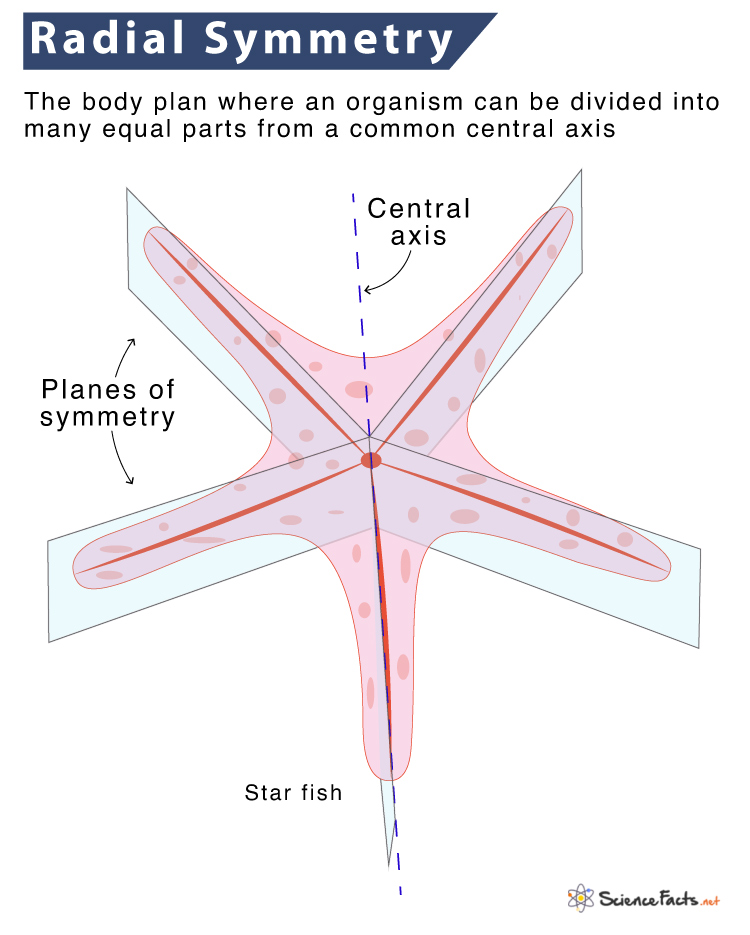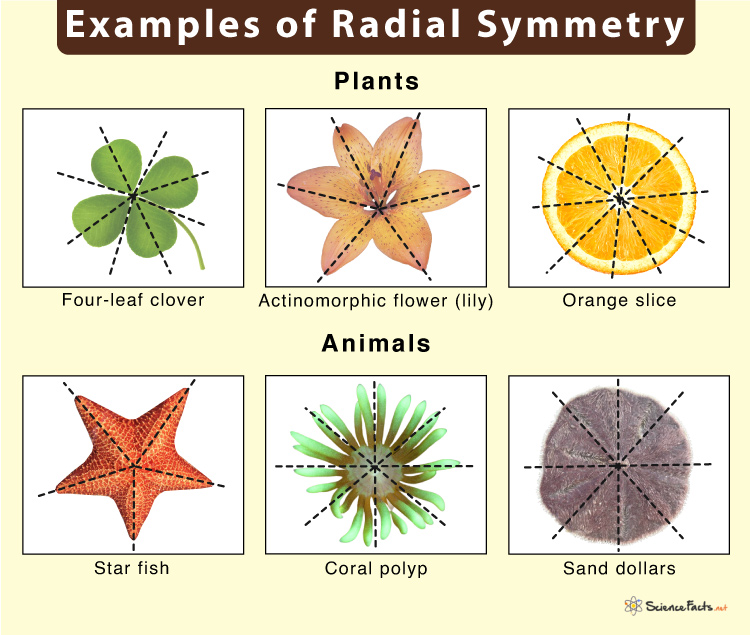Radial Symmetry
All living organisms can be classified into three basic types of body symmetry. They are radial, bilateral, and asymmetrical. In this article, we shall discuss radial symmetry in detail.
What is Radial Symmetry
Radial symmetry is the type of body plan where an organism can be divided into many equal parts from a common center point, the central axis. The planes dividing the body are called the planes of symmetry. The number of parts formed can vary from one organism to another. An analogy can be drawn by cutting a bread. Bread can be sliced into many parts such that all of them are equal in size.
Examples of Radial Symmetry
Compared to bilateral symmetry, which is most commonly seen in animals, radial symmetry is more abundant in the plant kingdom. Many flowers exhibit radial symmetry. Flower petals extend from a central axis in a radial pattern. The segments of an orange, the seed distribution in kiwi fruit, and the five-pointed star of an apple core show a radial pattern.
In animals, two phyla – cnidarians and echinoderms exhibit radial symmetry. Cnidarians include jellyfish, sea anemones, and corals. Specifically, jellyfish has radial symmetry in four points around its center. Again, starfish, sea urchins, and sand dollars are echinoderms. Sea stars have radial symmetry in five points around their center.
Characteristics of Animals
Animals having radial symmetry:
- have many lines of symmetry
- have a top and a bottom region but do not have a front, back, or distinctive left and right sides
- have a side with a mouth – the oral side. And, without the mouth – the aboral side
- can move in all directions
- move slowly, if at all, compared to bilaterally symmetrical organisms. For example, jellyfish primarily drift with waves and currents, sea stars move very slowly, and sea anemones barely move.
- are primarily sessile – organisms that are more or less permanently attached to a surface and cannot move on their own
- and have sensory structures scattered around their body. For example, sea stars have eyespots at the end of their arms
Advantages and Disadvantages
In nature, radial symmetry offers some selective benefits to living organisms.
- It is easier for organisms to regenerate their lost body parts. For example, a starfish can completely regenerate its lost arm or even an entirely new body as long as its central disk is present.
- It is best for sessile animals as they can obtain food or detect enemies easily from all directions.
However, it offers some disadvantages as well.
- Organisms are very slow and not compatible with a coordinated and quick movement.
- Have a restricted vision that is primarily two-dimensional. It makes catching prey and evading predators difficult.
-
References
Article was last reviewed on Friday, February 17, 2023





